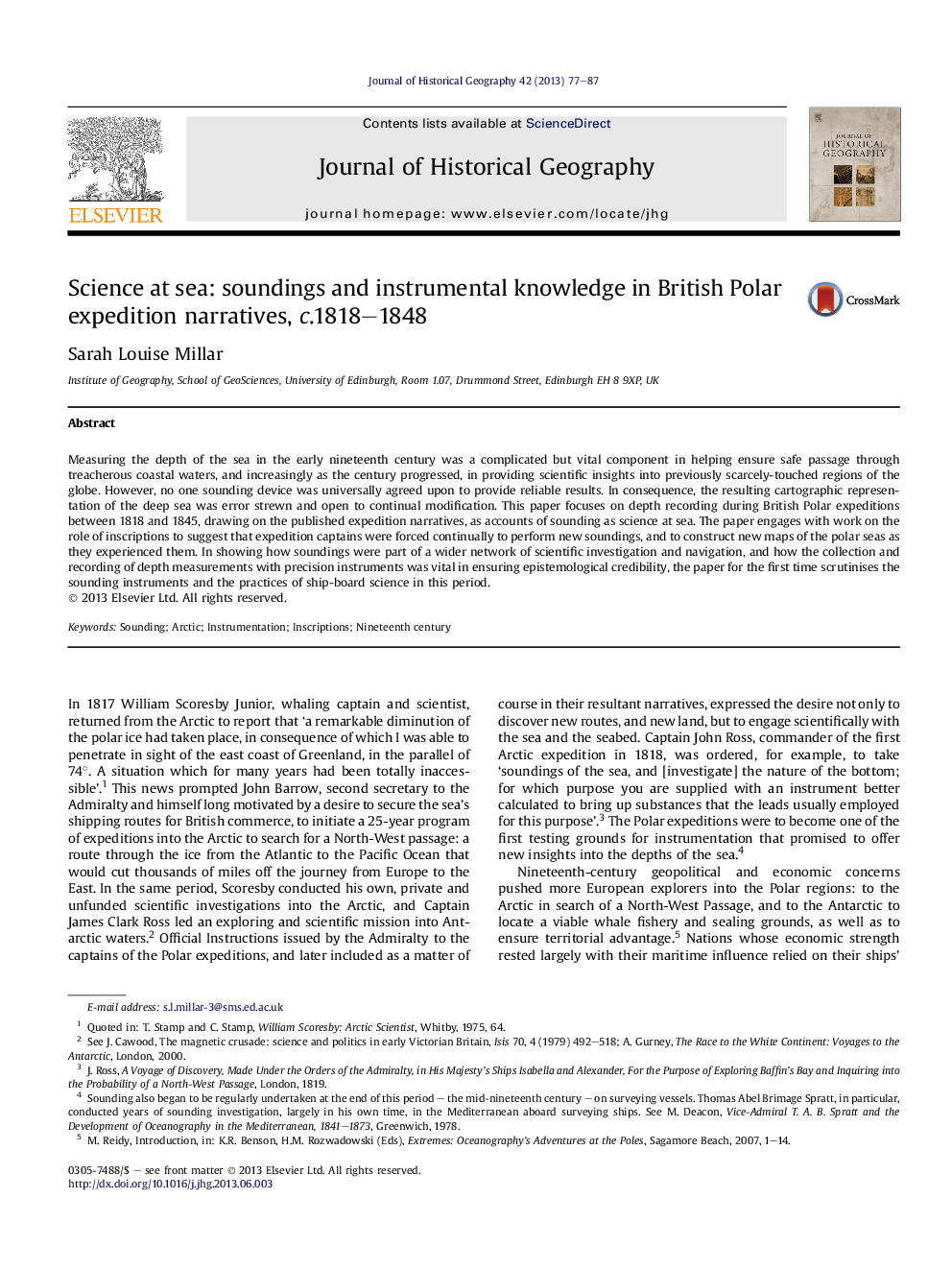| Article ID | Journal | Published Year | Pages | File Type |
|---|---|---|---|---|
| 7448382 | Journal of Historical Geography | 2013 | 11 Pages |
Abstract
Measuring the depth of the sea in the early nineteenth century was a complicated but vital component in helping ensure safe passage through treacherous coastal waters, and increasingly as the century progressed, in providing scientific insights into previously scarcely-touched regions of the globe. However, no one sounding device was universally agreed upon to provide reliable results. In consequence, the resulting cartographic representation of the deep sea was error strewn and open to continual modification. This paper focuses on depth recording during British Polar expeditions between 1818 and 1845, drawing on the published expedition narratives, as accounts of sounding as science at sea. The paper engages with work on the role of inscriptions to suggest that expedition captains were forced continually to perform new soundings, and to construct new maps of the polar seas as they experienced them. In showing how soundings were part of a wider network of scientific investigation and navigation, and how the collection and recording of depth measurements with precision instruments was vital in ensuring epistemological credibility, the paper for the first time scrutinises the sounding instruments and the practices of ship-board science in this period.
Related Topics
Social Sciences and Humanities
Arts and Humanities
History
Authors
Sarah Louise Millar,
